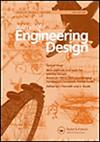新手工程师vs机器:用功能结构模型比较人工神经网络预测和学生对市场价格的估计
IF 3.4
2区 工程技术
Q1 ENGINEERING, MULTIDISCIPLINARY
引用次数: 0
摘要
摘要本文研究了在早期工程设计中使用人工神经网络(ANN)来模拟人类行为;具体来说,通过比较人工神经网络和工程新手的预测能力。比较的是人工神经网络和人类之间的“群体”。使用15种产品的功能结构模型作为预测的输入。此外,所提供的信息类型在拓扑信息和词汇表信息之间有所不同。对预测精度进行了比较,结果表明,人工神经网络人群的预测效果与新手估计相当。然而,学生们的预测更加精确。此外,学生对预测的信心进行了分析,结果表明,学生对自己的预测有低到中等的信心。随着词汇信息的增加,自信心也随之增强。最后,讨论了局限性和未来的工作,并提出了后续研究的研究问题。这项工作激发了未来对群体的研究,包括人类和虚拟群体,以及与集体智慧相关的成本效益。关键词:众智网络众筹功能结构深度学习市场价值预测披露声明作者未报告潜在利益冲突。Notes1 https://design.engr.oregonstate.edu/repo。本文章由计算机程序翻译,如有差异,请以英文原文为准。
Novice engineer vs. machine: comparing artificial neural network predictions with student estimates of market price using function structure models
AbstractThis paper investigates the use of Artificial Neural Networks (ANN) to model human behaviour in early-stage engineering design; specifically, by comparing the predictive capability of ANNs and engineering novices. The comparison is between ‘crowds' of ANNs and humans. Function structure models of fifteen products are used as input for prediction. Additionally, the type of information provided is varied between topology information and vocabulary information. Prediction accuracy is compared, with the results showing that ANN crowd performs comparably to the novice estimates. However, students are more precise with their predictions. Moreover, student confidence in predictions is analyzed, and results suggest that students have low to moderate confidence in their predictions. Confidence increased with the addition of vocabulary information. Finally, limitations and future work are discussed, with research questions presented for subsequent research. This work motivates future studies on crowds, both human and virtual and the cost-benefits associated with collective intelligence.KEYWORDS: Wisdom of the crowdANN Crowdfunction structuredeep learningmarket value prediction Disclosure statementNo potential conflict of interest was reported by the author(s).Notes1 https://design.engr.oregonstate.edu/repo.
求助全文
通过发布文献求助,成功后即可免费获取论文全文。
去求助
来源期刊

Journal of Engineering Design
工程技术-工程:综合
CiteScore
5.00
自引率
33.30%
发文量
18
审稿时长
4.5 months
期刊介绍:
The Journal of Engineering Design is a leading international publication that provides an essential forum for dialogue on important issues across all disciplines and aspects of the design of engineered products and systems. The Journal publishes pioneering, contemporary, best industrial practice as well as authoritative research, studies and review papers on the underlying principles of design, its management, practice, techniques and methodologies, rather than specific domain applications.
We welcome papers that examine the following topics:
Engineering design aesthetics, style and form-
Big data analytics in engineering design-
Collaborative design in engineering-
Engineering concept design-
Creativity and innovation in engineering-
Engineering design architectures-
Design costing in engineering
Design education and pedagogy in engineering-
Engineering design for X, e.g. manufacturability, assembly, environment, sustainability-
Engineering design management-
Design risk and uncertainty in engineering-
Engineering design theory and methodology-
Designing product platforms, modularity and reuse in engineering-
Emotive design, e.g. Kansei engineering-
Ergonomics, styling and the design process-
Evolutionary design activity in engineering (product improvement & refinement)-
Global and distributed engineering design-
Inclusive design and assistive engineering technology-
Engineering industrial design and total design-
Integrated engineering design development-
Knowledge and information management in engineering-
Engineering maintainability, sustainability, safety and standards-
Multi, inter and trans disciplinary engineering design-
New engineering product design and development-
Engineering product introduction process[...]
 求助内容:
求助内容: 应助结果提醒方式:
应助结果提醒方式:


